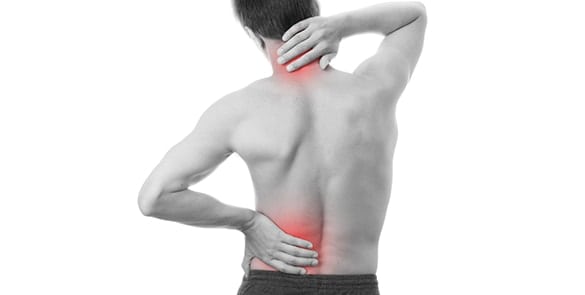
Learn more about Spondylolisthesis and how Los Angeles Pain Associates can manage your symptoms.
If a vertebra slips out of place and moves forward onto the one below it, it’s a condition called spondylolisthesis. Sometimes confused with slipped or herniated discs, spondylolisthesis can also result in pressure on nerve roots and added stress on the spinal cord itself. Pain depends on how far a vertebra has slipped and whether or not it’s pressing on anything nearby.
- Symptoms can be nonexistent or severe
- Treatment is similar to what’s done for patients with lower back pain
CONTACT US TODAY
What Causes Spondylolisthesis
Spondylolisthesis results when one or more of the several small joints that support the spine becomes damaged or misaligned. Spinal joints may become damaged from sudden trauma or an accident, joint abnormalities present since birth, stress fractures due to injury or overuse of joints, or progressive damage from conditions such as arthritis affecting the spine.
The condition may affect older adults if damage results from age-related, wear-and-tear stress fractures. Children and teens active in sports can experience pain from a slipped vertebra. Overuse injuries may also result from certain exercises that are hard on the spine and its muscles or related activities like competitive weightlifting. When spondylolisthesis is causing pain, the following symptoms may be experienced:
- Persistent low back pain
- Radiating pain felt in the buttocks or one or both legs
- Pain that becomes worse when twisting or bending
- Difficulty with balance or trouble walking
- Tight hamstring and buttock muscles
- Stiffness in the lower back or legs


How it’s Diagnosed
A physical exam that includes a review of symptoms is the first step in diagnosing spondylolisthesis. Patients are sometimes asked to make simple movements to see if there is difficulty with straightening a leg outward, a possible sign of a slipped vertebra. An X-ray of the lower spine can identify which vertebra is out of place. A CT scan may be done to determine if there is related nerve or soft tissue damage.
Potential Treatments
Non-surgical remedies will be the first attempt at treatment for spondylolisthesis for most patients unless symptoms are severe or potentially life-threatening. Pain medications, anti-inflammatory drugs, and oral steroids may manage or alleviate symptoms. Heat and ice applications often ease swelling, relax muscles, and improve circulation in the affected area. Additional treatment possibilities include:
- Wearing a brace to support the affected area of the spine
- Epidural injections
- Hamstring stretches and similar exercises
- Chiropractic manipulation
Surgical Options
If surgery is necessary for spondylolisthesis, it’s usually in the form of lumbar fusion surgery to stabilize the affected area of the spine. A discogram may be performed prior to surgery to determine how many levels of the spine may need to be fused.
Being mindful of posture, maintaining a healthy weight, opting for nutrient-rich foods, avoiding smoking and excessive alcohol consumption, and exercising regularly (even 15-30 minutes a day can be beneficial) are among the efforts that can be made to prevent issues with spondylolisthesis. Since the lower back is often affected by a slipped vertebra, avoiding sitting in the same position for too long can also help ease spine stress and protect bones of the spine.


